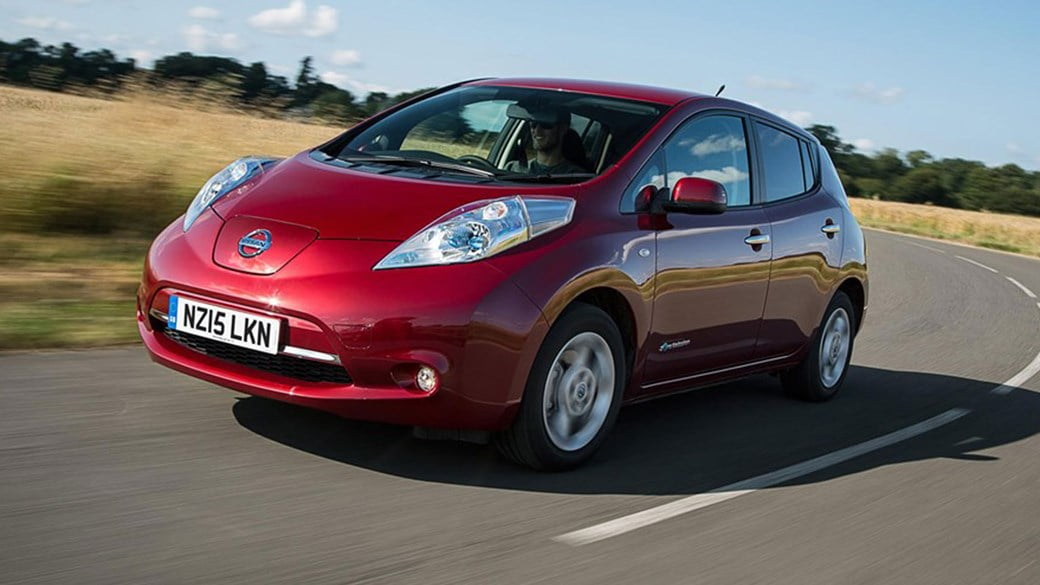
The electric Nissan Leaf now has a greater range thanks to a boosted 30kWh battery pack. But is a bigger charge enough to tempt you away from cheaper, conventional petrol and diesel hatchbacks that don’t suffer from range anxiety in the first place?
Read our first drive review to find out whether – five years after becoming the first credibly mainstream EV – it can still make a viable argument for the silent but saintly genre.
What’s new on the 2016 Nissan Leaf?
The Leaf has evolved slowly since launch in 2010, gaining a tidier interior here, cleverer electronics there, and now a bigger charge capacity to stretch the (theoretical) range by as much as a quarter. Nissan claims the 30kWh battery pack means you can now drive up to 155 miles on a single charge.
The battery is the same size as the old one, but weighs around 21kg more, thanks to a different cell architecture inside and uprated power management systems on top. Buyers can still choose the cheaper 24kWh Leaf if they prefer.
There’s a refreshed 7in touchscreen multimedia system, too, and Nissan has overhauled its smartphone app, rebranding it NissanConnect EV and adding new features such as guidance to the nearest unused charging stations. You can still remotely warm your Leaf up from the breakfast table – handy for those cold winter mornings. Relying on electricity for heat means it defrosts in a jiffy.
How does the new Leaf EV drive?
The Leaf hasn’t changed much since we first drove it earlier this decade; the car is still a paragon of saintly silence – wafting quietly around city streets, the soft, floaty ride smothering away the worst road acne rolling under those eco-tilted Dunlop Enasave 215/50 R17 tyres. There are few more relaxing cars to drive.
You must first adapt to the modernist vibe inside, though: the controls are wantonly different, from the stubby rotund gearlever to the alien instruments, split on the dashboard in the fashion of modern Peugeots. The parking brake is a foot-operated affair, too. Traditionalists may prefer the Teutonic normality of anelectric VW e-Golf.
But once in D, the Leaf simply pours down the road, surfing a wave of EV torque that guarantees snappy responses around town. The car defaults to Eco mode for softer inputs to save the battery; flick into Normal and there’s a noticeable surge in thrust (just be warned the range-meter will enter freefall across the dash if you go all silent-but-deadly in the traffic light grand prix).
Drive more gingerly and you’ll easily top 100 miles on a charge. We’re not sure that many will achieve the full 155 mile claim without plugging in…
Specs, costs and financial arguments
Nissan now sells the Leaf in two ways: you can either buy the car and battery outright, or consider leasing the battery to lower the purchase price. The UK Government still subsidises cars like the Leaf to the tune of £5000, so prices currently start at £20,790 for a 24kWh Visia, rising to £26,490 for our top-spec 30kWh Tekna – if you do it the old-fashioned way and buy outright. Yes, without grants this car costs over £30k…
Renting the battery is a handy way of reducing the initial purchase price of a Leaf. Depending on your average mileage, it costs from £70 a month for the battery if you do less than 7500 miles a year, rising to £129 monthly if you propose doing 15,000 miles per annum (most users will surely pay the lower fee for a range-limited EV).
This way, you can push the initial purchase price down to £15,790 for a 24kW Visia, saving you five grand. The most expensive 2016 model year Leaf, with the larger battery capacity, rises to £21,490 doing it this way.
What’s not to like?
This remains a quirky car and one sporting its woollen cardigan with pride. The Leaf is a curious statement of eco early adoption and that shape brings compromises: the far-flung A-pillars create a large blindspot at the base of the windscreen, and the tall transmission tunnel (whose function baffles us on a FWD electric hatch!) restricts space in the back to only two passengers. The boot has a huge lip and space is robbed by the rigmarole of charging cables, associated bags and – in our test car – a Bose stereo bass unit.
The nasty plastics in the cabin are a homage to early Duplo prototypes and the new touchscreen still feels decidedly aftermarket compared with the best rivals: the sat-nav lags behind Europe’s best (what is it with Japanese mapping?) and some digital buttons sit uncomfortably close to the edge of the screen.
Verdict
The Nissan Leaf still feels like an electric pioneer. This was the first mainstream bespoke EV, and remains the world’s best-selling electric car. Sales will only be buoyed by the decreasing price point of these complex cars; it’s like Moores’ law playing out on four wheels.
To sum up? The Japanese continue to hone the Leaf and it’s ageing well. There’s little for enthusiasts of sporty driving here, but there’s plenty if you want to join the battery revolution that’s quietly transforming our streetscape in a sensible, practical package.
[“source-carmagazine”]





